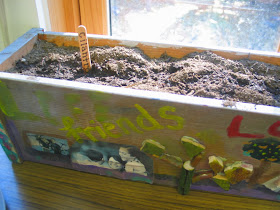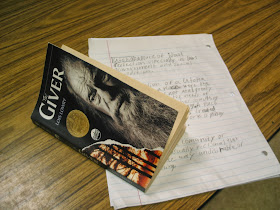Grade Level: Elementary
Objective: To further analyze fault movement and the geology of our region.
To simulate the fault activity that causes earthquakes and mountains, K and I took a two piece yogurt box and filled it with dirt. We demonstrated to the second graders how when the "fault" is pushed together earth gets pushed up, creating mountains but when the "fault" is pulled apart a gap, gorge, or valley is formed.
We also did a classic class volcano demonstration using baking soda, vinegar, dish soap, water, and food coloring. Although this activity does not show how volcanoes work, it entertained and engaged the students, opening up the class for more conversation about volcanoes.


















































